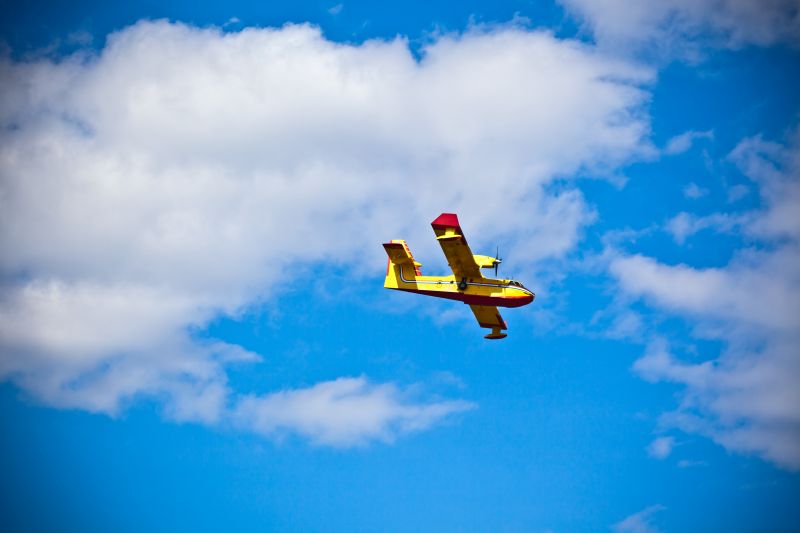Click here to get this post in PDF
Remote-control airplanes offer an exciting blend of challenge, skill, and creativity, making them a beloved hobby for enthusiasts of all ages. From beginners learning the basics of controlled flight to experts mastering aerobatic maneuvers, RC aviation offers countless opportunities. Choosing the right model is crucial, as different airplanes cater to varying skill levels and preferences, whether it’s a stable trainer or a high-speed jet. Understanding essential components and safety guidelines ensures smooth operations and minimizes risks. Beyond the technical aspects, as Cody Fortier illustrates, the RC community thrives on shared passion, competition, and technological innovations that continue to push boundaries.
The Excitement of RC Airplanes
Remote-control airplanes captivate hobbyists with the thrill of flight and the sense of control they offer. Pilots experience the excitement of maneuvering aircraft through the sky, feeling the rush of takeoff and the satisfaction of a smooth landing. Whether soaring through open fields or navigating intricate aerobatic moves, RC flying provides a unique blend of challenge and enjoyment.
Beyond entertainment, piloting these miniature planes sharpens hand-eye coordination and enhances problem-solving skills. Adjusting for wind conditions, maintaining stability, and executing precise movements require focus and adaptability. Many enthusiasts find the hobby rewarding as they refine their techniques and push their abilities further. Experimenting with different flying styles or tweaking control settings can add another layer of depth, keeping the experience fresh and engaging.
Types of RC Airplanes and Choosing the Right One
RC airplanes come in various designs, each catering to different skill levels and flying styles. Trainer planes are ideal for newcomers due to their stability and forgiving controls, allowing beginners to build confidence. More advanced pilots often gravitate toward sports planes, which are capable of performing thrilling aerobatic maneuvers. Scale models attract enthusiasts who appreciate realistic replicas of real-world aircraft, offering both visual appeal and technical challenge. Some builders even modify these models to enhance authenticity, adding custom paint jobs and intricate details.
Gliders and jet-powered planes provide contrasting experiences. Gliders use wind currents to stay aloft, requiring careful energy management and strategic positioning, while jet-powered models deliver high-speed excitement and demand quick reflexes. Choosing the right type depends on personal preference, experience level, and the kind of flying experience one seeks. A beginner might start with a simple electric trainer, gradually transitioning to more complex models as their skills improve.
Essential Components and Getting Started
A remote-control airplane consists of several key components that work together to ensure smooth operation. The transmitter and receiver form the communication link between the pilot and the aircraft, allowing precise control over movements. Motors, batteries, and servos contribute to propulsion and maneuverability, each playing a crucial role in flight performance. Even seemingly minor tweaks, like adjusting servo throws or upgrading the battery pack, can affect flight characteristics.
For those starting out, beginner-friendly kits offer an excellent entry point into the hobby. Many ready-to-fly models come preassembled with everything needed, reducing the complexity of setup. Learning to maintain and troubleshoot these planes is just as important as flying them, as regular upkeep ensures longevity and reliability. Enthusiasts who develop a deeper interest often explore custom builds, tweaking designs to match their flying style and preferences.
Mastering Flight and Safety Guidelines
Learning to fly an RC airplane requires patience and practice. Beginners often start with basic maneuvers like steady takeoffs, controlled turns, and smooth landings before attempting more advanced techniques. Open fields provide an ideal environment, minimizing obstacles and reducing the risk of crashes. Practicing with a simulator before flying a real model can also help beginners develop confidence and improve their reaction times.
Safety is just as important as skill development. Pilots must conduct pre-flight inspections, ensuring that batteries are charged, control surfaces respond correctly, and weather conditions are suitable. Strong winds or sudden gusts can make handling unpredictable, increasing the chances of accidents. Responsible flying also includes respecting airspace regulations and keeping a safe distance from people or buildings. Many hobbyists also use brightly colored planes or LED lights to improve visibility, reducing the risk of losing sight of their aircraft mid-flight.
Community, Competitions, and Shared Passion
RC aviation is more than a solo hobby; it thrives on community and shared enthusiasm. Local clubs and online forums connect pilots, offering spaces to exchange tips, troubleshoot technical issues, and organize flying events. Many experienced hobbyists mentor newcomers, helping them refine their skills and avoid common beginner mistakes. The camaraderie within the RC world often turns casual flyers into lifelong enthusiasts.
Some clubs even host workshops where members can build, repair, and modify their planes together, fostering collaboration and knowledge-sharing. Competitions add another layer of excitement, bringing together pilots to showcase their precision and creativity. Friendly rivalries often emerge, pushing participants to perfect their skills and develop innovative strategies.
Innovations Shaping the Future of RC Aviation
Technological advancements continue to transform the RC experience. Modern models incorporate GPS stabilization, autopilot functions, and even artificial intelligence to assist with navigation. These innovations make flying more accessible to beginners while expanding the possibilities for advanced pilots. Longer battery life and lightweight materials also allow for extended flight times and improved performance.
With first-person view (FPV) systems pilots can now experience flight from a cockpit perspective using specialized goggles, enhancing immersion and precision. RC aviation has also influenced professional fields, inspiring careers in drone operation, aeronautical engineering, and robotics. As technology progresses, the boundaries of what these aircraft can achieve continue to expand.
Also read: Is blogging a hobby or a business?
Image source: elements.envato.com

